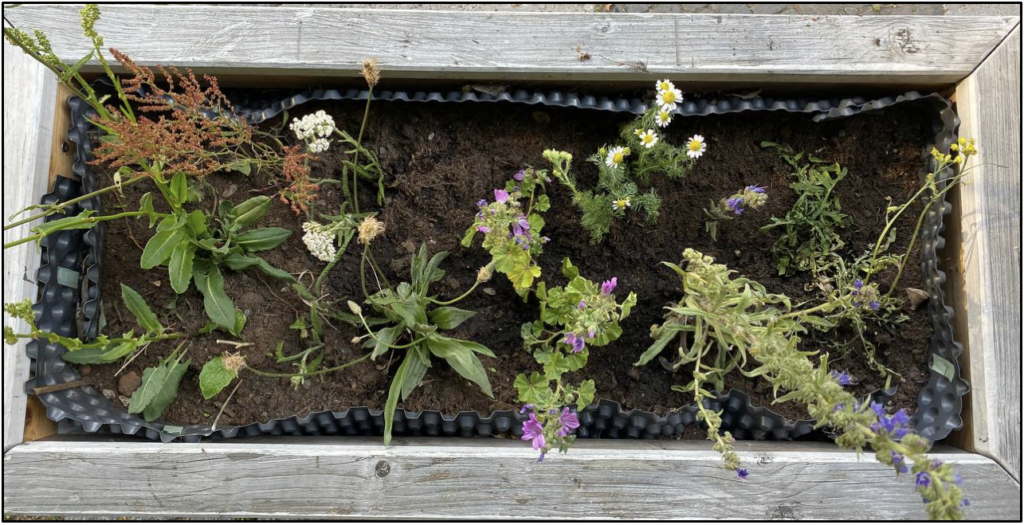by Janina and Johanna
What if we told you that you could eat the city that you live in? You would probably scrunch your eyebrows, make a distrusting face and shake your head… you are doing this right now?- Then you should continue to read now.
About 30,000 plants are edible worldwide. But only about 150 plants play a role in our diet and about 30 species cover 95% of the world’s daily calorie requirement (ZDF 2019). A large number of them are edible wild plants that can also be found in cities.
We asked ourselves how much knowledge the hard-working urban gardeners and city- dwellers actually have about edible wild plants. Because theoretically the salad for the hot, sunny afternoon could grow and be picked around the corner between the asphalt and masonry. But does an urban gardener or city dweller even dare? – or are there too many prejudices about the tasty green wild plants? Is it the peeing dog or the filth of the city that might put off the city- dwellers culinary interest? And where, if at all, would edible plants be collected?
All this, we tried to find out by surveying almost 50 urban gardeners and city-dwellers. In the online questionnaire, the participants could also take part in a quiz in which they could put their knowledge of plants to the test.
Results in a nutshell:
- Surprisingly many (82 %) knew edible wild plants existed and about 60% scored more than 60 % in the plant quiz, showing off with a quite good to expert knowledge
- the top three mentioned edible wild plants were nettle plant, dandelion & goutweed
- 12 % wouldn’t dare to eat them because of hygienic concerns and lack of knowledge or insufficient identification skills
- Most of the participants, in both groups, would prefer to collect in areas with little to no human interaction, like in the forest (94 %), followed by natural landscape sceneries (65%) and in parks (30%).
- Main reasons for avoiding consumption: lack of knowledge, uncertainty, hygienic prejudice like dog feces and urine
- something that everyone (100%) agreed upon is that they are healthy for you!
In order to do a little more for environmental education, we planted two raised beds with edible wild plants on the raised beds of the TU Berlin. Down below you can marvel at them and yes- the plants in this bed are all edible!!!

Besides, we prepared a poster that should help by-passers to learn to get to know the plants better. However, our raised beds were only able to bring joy and education for a short time, because after only two weeks our pretty edible wild plants were presumably replaced by cultivated pumpkins and other types of vegetables (see image below).

Nevertheless, you can find this poster here in this blog and we will soon start planting the raised beds again- and give it a second try…
Well, next time you are out and about in your city- please dare to have a look at the variability and abundance of all the yummy wild plants. You won’t regret it and it also comes with a lot of healthy nutrition and vitamins. After all, 100g of nettles contain 6x more Vitamin C than a lemon (Plantura,o.J). And don’t worry about the dirt and supposed urine, it’s easily washed off and does not harm you in any way.
Bon appetit.
Literature:
ZDF, 2019. Essbare Pflanzen weltweit. Online URL: https://www.zdf.de/dokumentation/planet-e/vielfalt-vom-feld-grafik1-102.html (Accessed on 21.07.2022)
Plantura, o.J., Vegetables with vitamin C: the best vegetable sources of vitamin C. Online URL: https://plantura.garden/uk/green-living/nutrition/vegetables-with-vitamin-c (Accessed on 21.07.2022)



